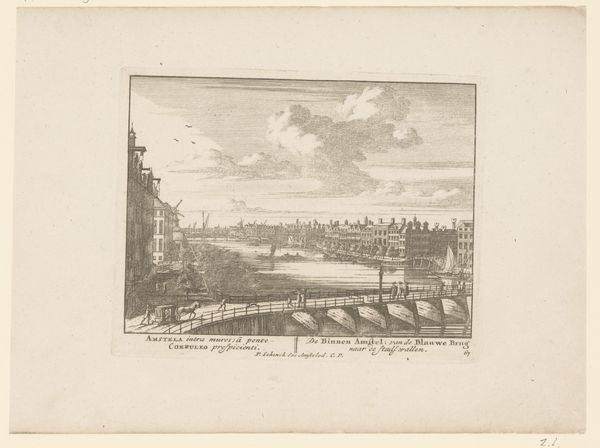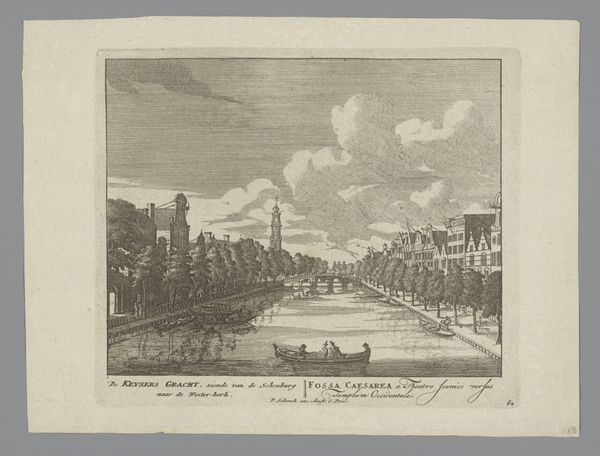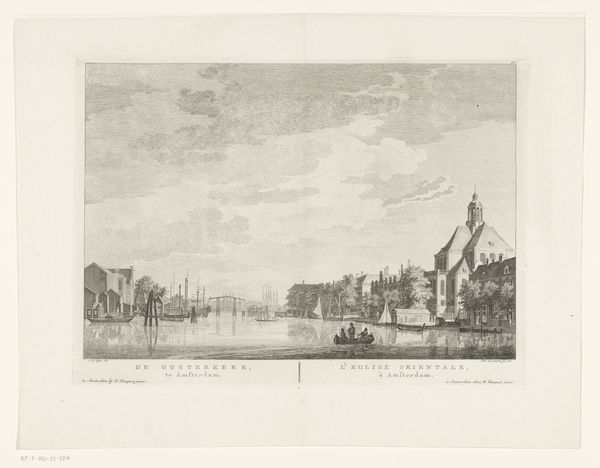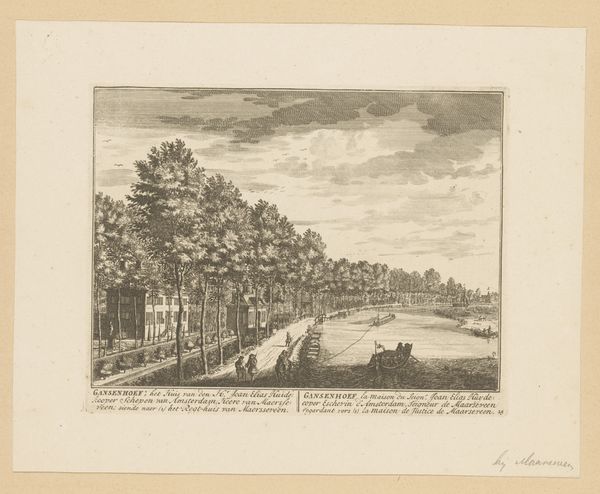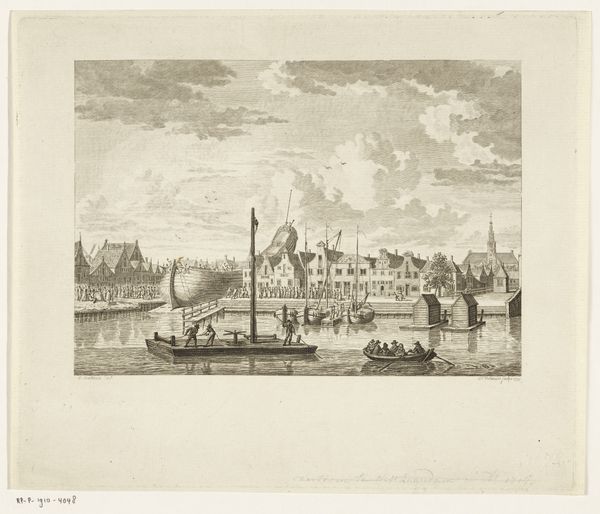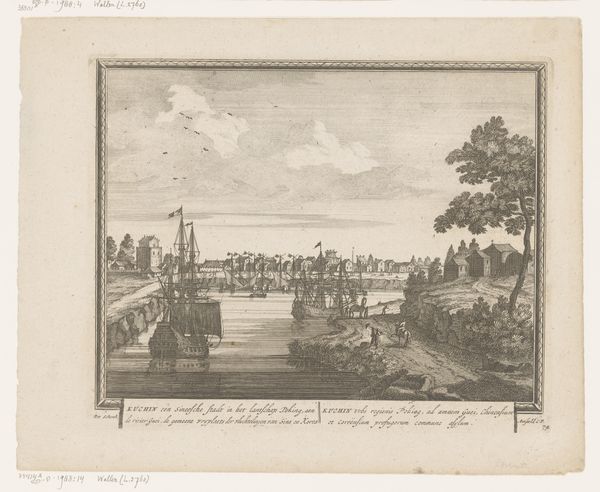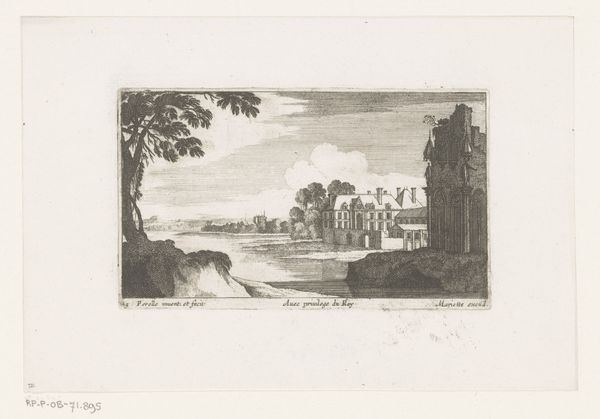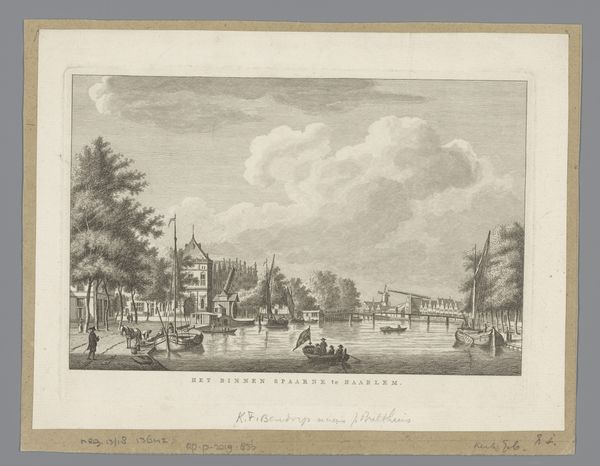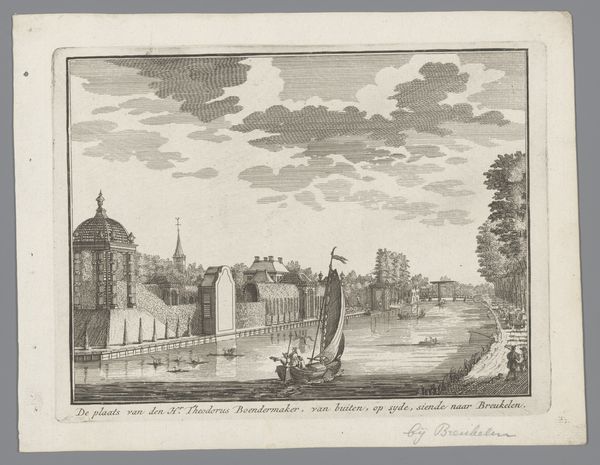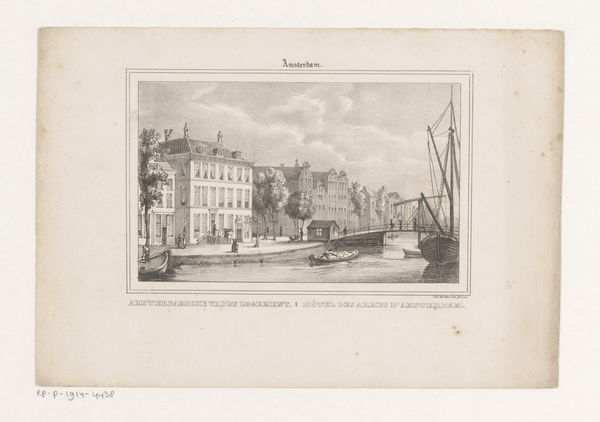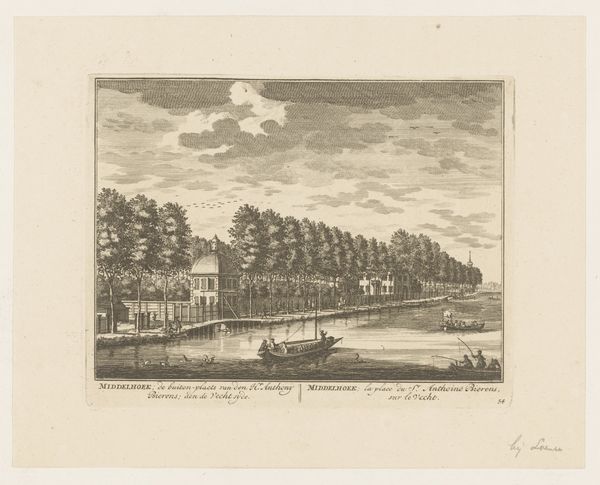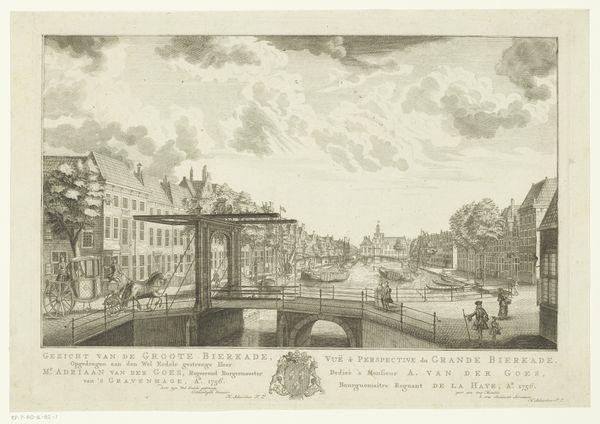
print, etching
#
dutch-golden-age
# print
#
etching
#
landscape
#
cityscape
#
realism
Dimensions: height 129 mm, width 168 mm
Copyright: Rijks Museum: Open Domain
This print depicting the Keizersgracht in Amsterdam was made by Jan van Call, sometime in the late 17th century. It’s an etching, meaning that the artist covered a metal plate, likely copper, with a waxy ground, then scratched an image into it with a sharp needle. Looking closely, you can see the accumulation of tiny engraved lines, which together create tone, texture, and depth. This was a very exacting process, requiring careful control of pressure and line weight. The plate would then have been submerged in acid, which bit into the exposed metal, and finally, inked and printed onto paper. While the image itself celebrates the bustling activity of Amsterdam, the printmaking process also speaks to the industry and labor of the time, as each impression required skilled work. The success of the print relies on the close relationship between the artist, the etcher, and the printer, reminding us that even seemingly straightforward images are the result of a network of craft and commerce. By understanding the processes involved, we can appreciate not only the image, but also the social context that made it possible.
Comments
No comments
Be the first to comment and join the conversation on the ultimate creative platform.
